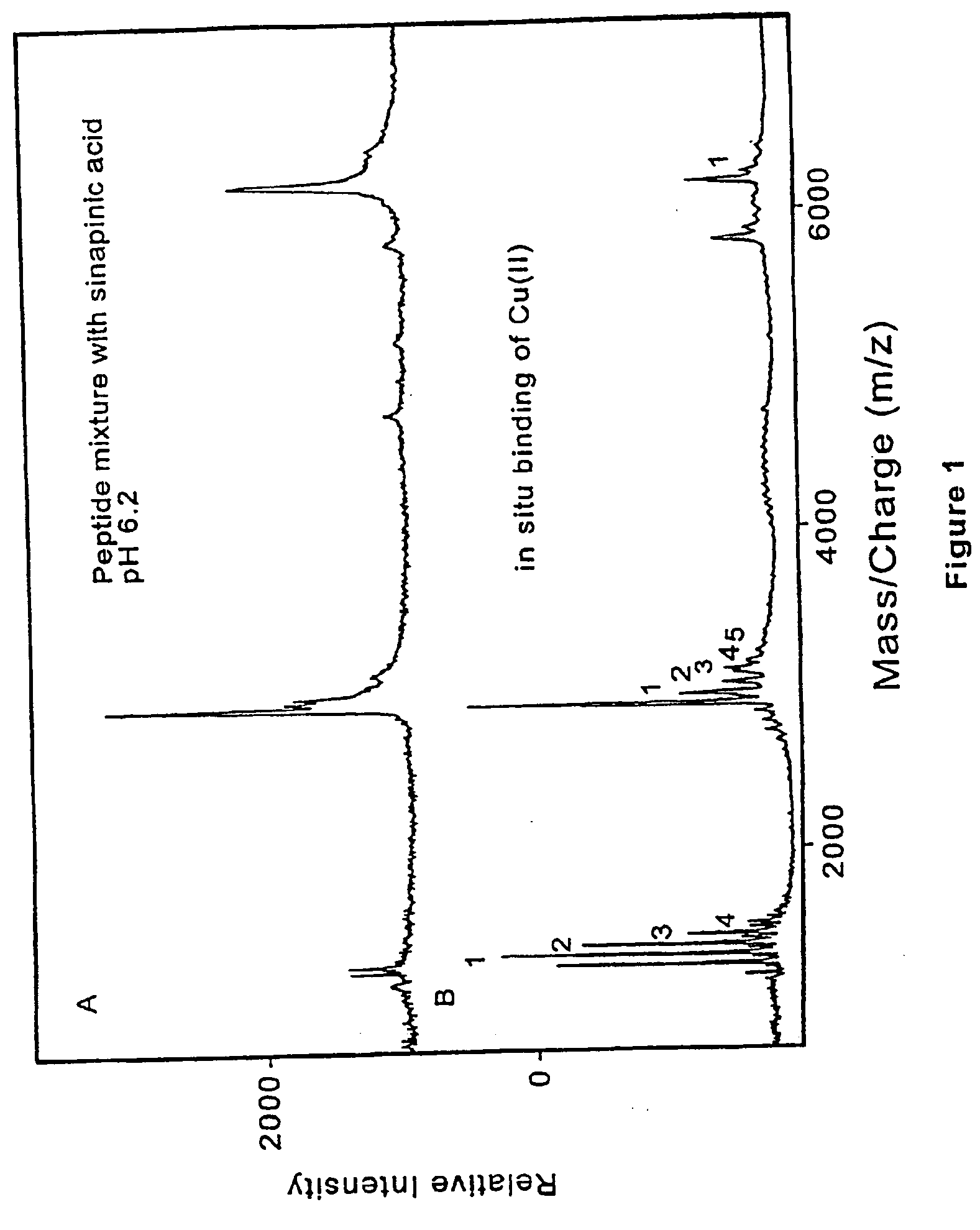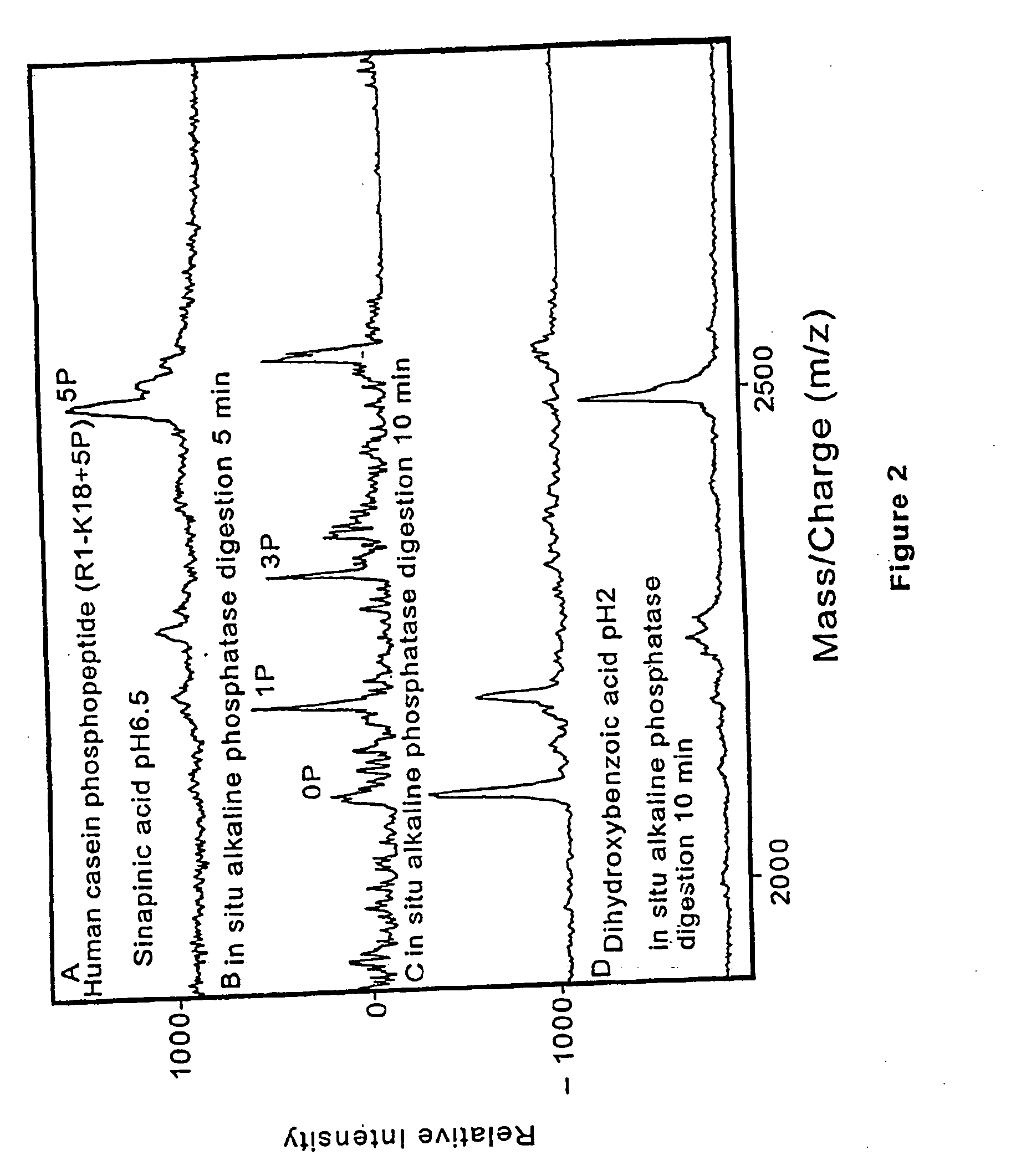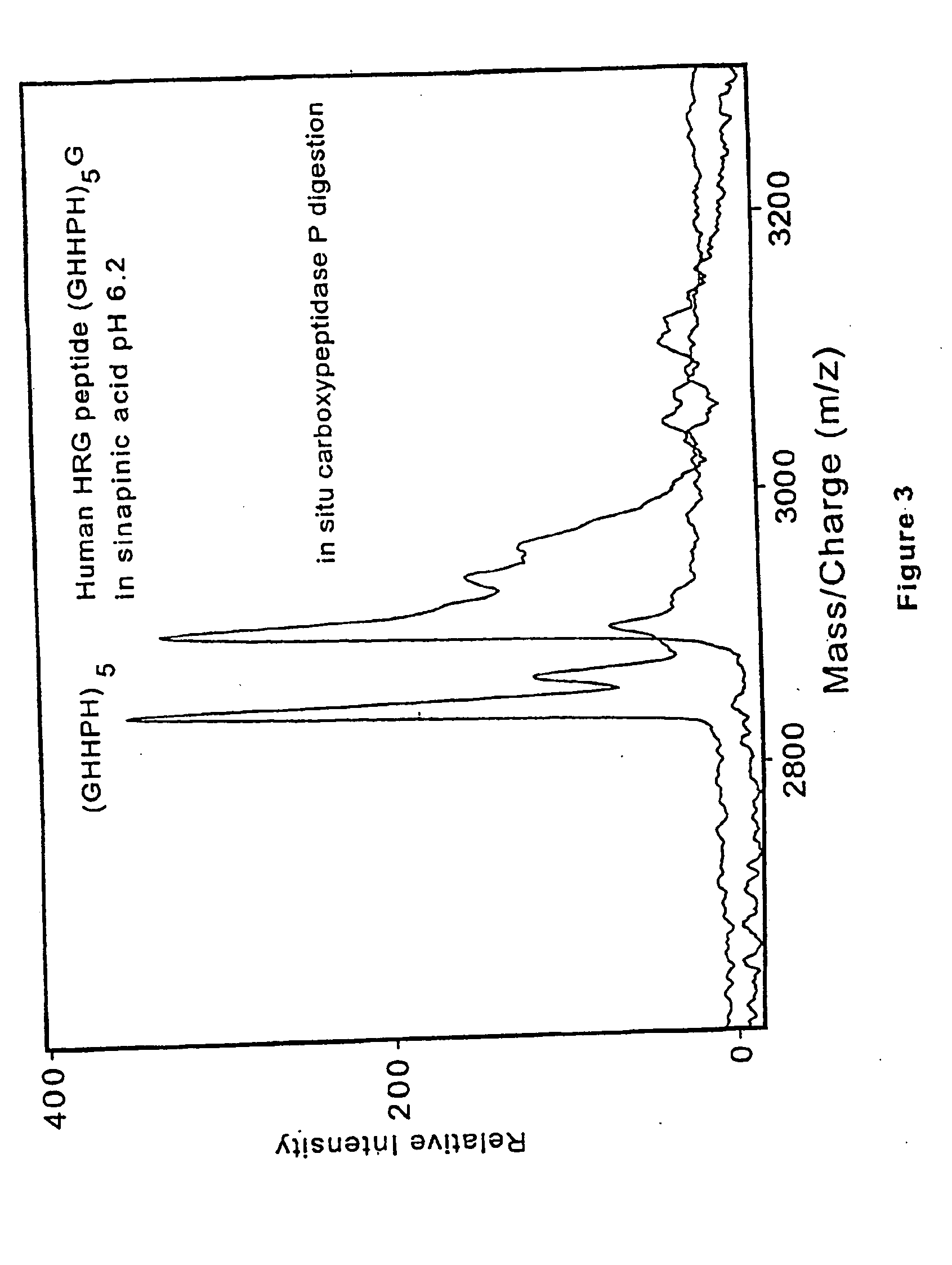Method and apparatus for desorption and ionization of analytes
a technology of analytes and methods, applied in the field of mass spectrometry, can solve the problems of inability to accurately determine the exact amount the difficulty of mass and identity of the original macromolecule, and the adaptation of the prior art procedure to the analysis of protein or other macromolecules. it can facilitate desorption/ionization and achieve the effect of accurately determining exactly
- Summary
- Abstract
- Description
- Claims
- Application Information
AI Technical Summary
Benefits of technology
Problems solved by technology
Method used
Image
Examples
examples
[0106] Group 1. Energy-absorbing molecule covalently bonded to surface via the N-group
[0107] Cinnamamide (Aldrich, not a matrix by prior art) was dissolved in isopropanol / 0.5 M sodium carbonate (3:1) and mixed with divinyl sulfone (Fluka, Ronkonkoma, N.Y.) activated Sepharose (Pharmacia) at room temperature for 2 hr. The excess molecules were washed away with isopropanol. The proposed structure was presented in FIG. 13. 2 ul of bound or free molecule was deposited on the probe tips, 1 ul of peptide mixtures in 0.1% TFA was added on top and the result showed the peptide ion signals detected only for the bound form. FIG. 14.
[0108] Group 2. Energy absorbing molecule covalently bonded to surface via the C-group
[0109] Cynnamyl bromide (Aldrich, not a matrix by prior art) was dissolved in isopropanol / 0.5 M sodium carbonate and mixed with divinyl sulfone-activated Sepharose at room temperature overnight. The excess molecules were washed away with isopropanol. The proposed structures are...
PUM
| Property | Measurement | Unit |
|---|---|---|
| molecular mass | aaaaa | aaaaa |
| molecular mass | aaaaa | aaaaa |
| molecular weights | aaaaa | aaaaa |
Abstract
Description
Claims
Application Information
 Login to View More
Login to View More - R&D
- Intellectual Property
- Life Sciences
- Materials
- Tech Scout
- Unparalleled Data Quality
- Higher Quality Content
- 60% Fewer Hallucinations
Browse by: Latest US Patents, China's latest patents, Technical Efficacy Thesaurus, Application Domain, Technology Topic, Popular Technical Reports.
© 2025 PatSnap. All rights reserved.Legal|Privacy policy|Modern Slavery Act Transparency Statement|Sitemap|About US| Contact US: help@patsnap.com



